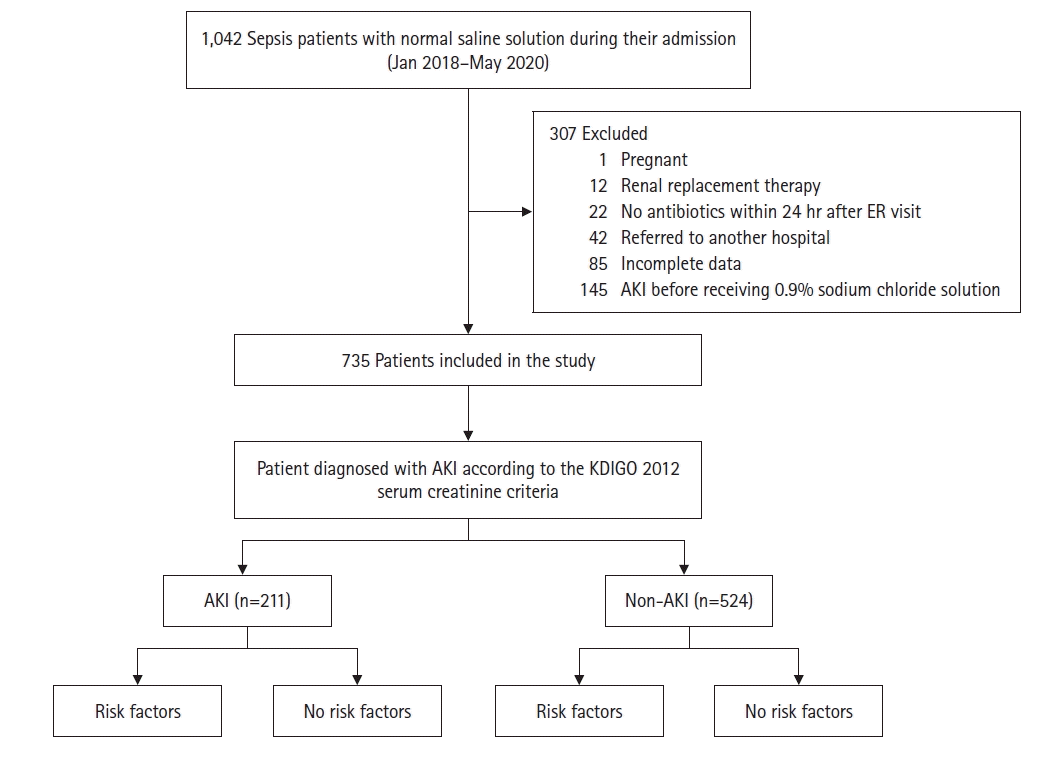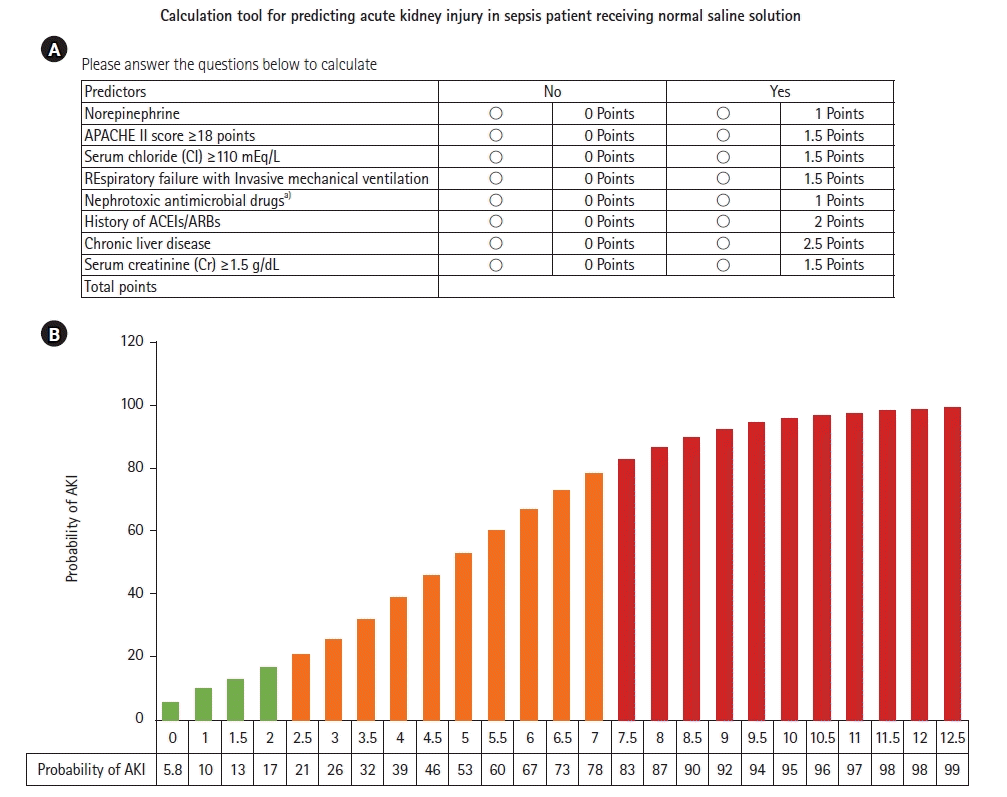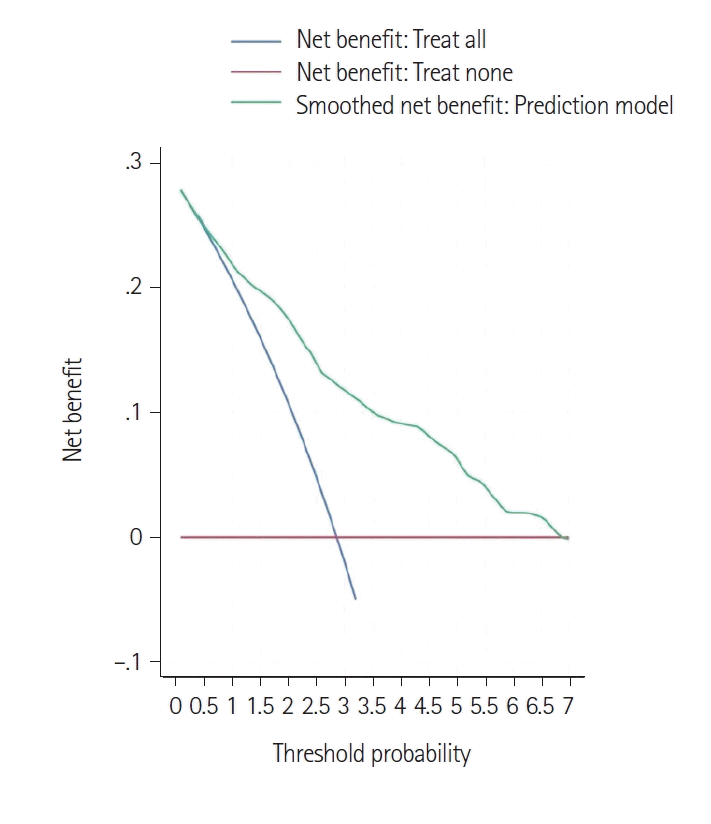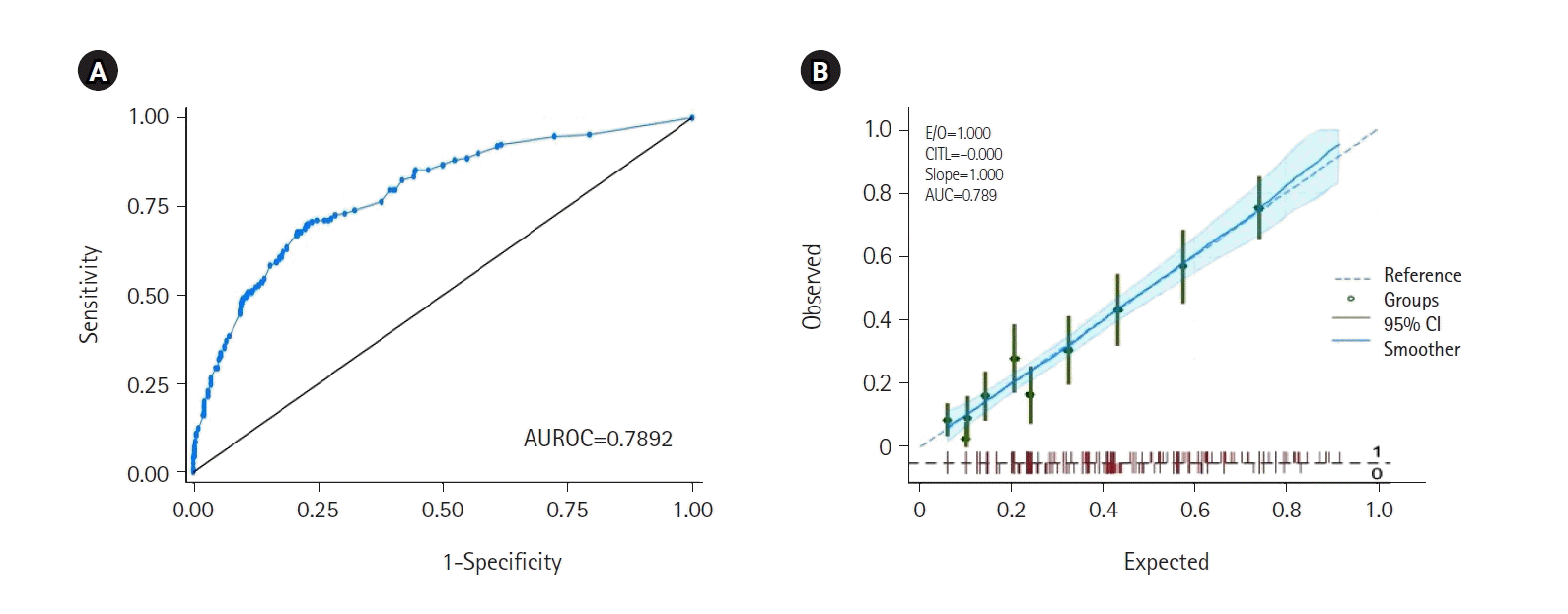Abstract
Background
Methods
Results
Notes
AUTHOR CONTRIBUTIONS
Conceptualization: PC, WS. Methodology: PC, SK. Formal analysis: PC, NS, WS, ST, AS. Data curation: PC, NS, WS, ST, AS. Visualization: SK, WS. Project administration: all authors. Writing – original draft: PC. Writing – review & editing: PC. All authors read and agreed to the published version of the manuscript.
SUPPLEMENTARY MATERIALS
Supplementary Table 2.
Supplementary Table 3.
REFERENCES
Figure 1.

Figure 2.

Figure 3.

Figure 4.

Table 1.
Values are presented as number (%), mean±standard deviation, or median (interquartile range).
AKI: acute kidney injury; BMI: body mass index; ACEI: angiotensin converting enzyme inhibitor; ARB: angiotensin receptor blocker; MAP: mean arterial blood pressure; SOFA: Sequential Organ Failure Assessment; APACHE: Acute Physiology and Chronic Health Evaluation.
Table 2.
| Risk factor | OR | 95% CI | P-value | Coefficient | Score |
|---|---|---|---|---|---|
| Norepinephrine | |||||
| No | Reference | 0 | 0 | ||
| Yes | 1.82 | 1.24–2.66 | 0.002 | 0.60 | 1 |
| APACHE II score | |||||
| <18 points | Reference | 0 | 0 | ||
| ≥18 points | 2.26 | 1.46–3.51 | <0.001 | 0.82 | 1.5 |
| Serum chloride | |||||
| <110 mEq/L | Reference | 0 | 0 | ||
| ≥110 mEq/L | 2.45 | 1.46–4.09 | 0.001 | 0.89 | 1.5 |
| Respiratory failure with invasive mechanical ventilation | |||||
| No | Reference | 0 | 0 | ||
| Yes | 2.74 | 1.80–4.15 | <0.001 | 1.01 | 1.5 |
| Nephrotoxic antimicrobial drugsa) | |||||
| No | Reference | 0 | 0.58 | 0 | |
| Yes | 1.79 | 1.22–2.61 | 0.003 | 1 | |
| History of ACEIs/ARBs | |||||
| No | Reference | 0 | 0 | ||
| Yes | 2.83 | 1.79–4.46 | <0.001 | 1.04 | 2 |
| Chronic liver disease | |||||
| No | Reference | 0 | 0 | ||
| Yes | 3.34 | 1.60–6.95 | 0.001 | 1.21 | 2.5 |
| Serum creatinine | |||||
| <1.5 g/dl | Reference | 0 | 0 | ||
| ≥1.5 g/dl | 2.31 | 1.55–3.43 | <0.001 | 0.84 | 1.5 |
Table 3.
| Statistics |
Performance |
||
|---|---|---|---|
| Original apparent | Test | Optimism adjusted | |
| AUROC | 0.795 | 0.786 | –0.009 |
| Calibration-in-the-large | 0.000 | –0.007 | –0.007 |
| Calibration slope | 1.000 | 0.954 | –0.046 |
Optimism adjusted values were derived from test performance – original apparent performance.
AUROC: area under the receiver operating characteristic curve.
a) The NACl RENAL-Cr score includes eight potential risk factors: norepinephrine, the Acute Physiology and Chronic Health Evaluation II score, serum chloride, respiratory failure with invasive mechanical ventilation, nephrotoxic antimicrobial drug use, history of angiotensin-converting enzyme inhibitors/angiotensin receptor blockers use, history of liver disease, and serum creatinine.




 PDF
PDF Citation
Citation Print
Print



 XML Download
XML Download